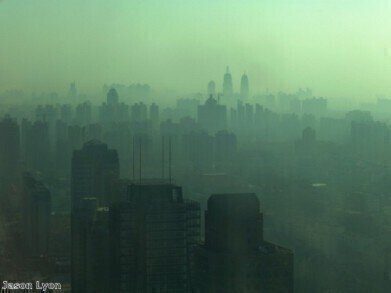Air Monitoring
Soluble iron in skies over China’s cities could create health risk - study
Oct 13 2020
Industrial and vehicle pollution in the skies above East China’s major cities is boosting the amount of atmospheric soluble iron particles – creating health risks for citizens, a new study reveals.
Research indicates that acidic gases emitted from power generation, industry and vehicle exhausts are helping to dissolve insoluble iron particles in Beijing, Handan, Zhengzhou and Hangzhou.
The tiny soluble iron-containing particles created as a result of this can be inhaled by people – causing respiratory illness, as well as being transported by winter winds into the Pacific Ocean, affecting the oceanic ecosystem.
Researchers at the University of Birmingham worked with partners at Zhejiang University, Hangzhou; China University of Mining and Technology, Beijing; Hebei University of Engineering, Handan; and Zhongyuan University of Technology, Zhengzhou – publishing their findings in Environmental Pollution.
Study co-author Zongbo Shi, Professor of Atmospheric Biogeochemistry at the University of Birmingham, commented: “Our research shows that chemical processing is a key reason behind greater amounts of soluble iron in the atmosphere on haze days when atmospheric pollution from man-made sources is higher.
“Acidic ‘man-made’ pollution helps to dissolve iron out of larger ‘mixed’ pollution particles – this is concerning because large amounts of tiny iron-containing particles can be inhaled and cause adverse health effects though the generation of oxygen free radicals.”
Iron carried in airborne particles is an essential external source for phytoplankton growth in large parts of remote oceans and indirectly affects the seas’ capture of planet-warming carbon dioxide, playing a significant positive role in the global carbon cycle and climate. There are natural sources of iron, such as desert dust and soil dust, and anthropogenic (man-made) generators such as fossil fuel combustion and steel industrial activities.
Researchers discovered that concentration of soluble iron particles was higher over the northern cities of Beijing, Handan and Zhengzhou than the southern city of Hangzhou. The experts selected the four cities to represent typical urban environments, with their respective populations of 21.5 million, 9.5 million, 10.1 million and 9.8 million citizens.
Beijing mainly suffers from road traffic pollution with pollutants from surrounding industrial regions, while heavy industry in Handan uses large amounts of energy, resulting in copious emissions of air pollutants. Zhengzhou is a major road, rail and air transport hub suffering from serious vehicle exhaust pollution, as does Hangzhou which is also polluted with contaminants blown in from surrounding industrial regions.
“Large amounts of soluble iron may be the catalyst for creating secondary sulphate particles in East China’s polluted atmosphere,” added Professor Shi. “We need further research to understand how this situation changes the creation of atmospheric oxygen free radicals which can pose significant health risks.”
Digital Edition
IET 34.2 March 2024
April 2024
Gas Detection - Biogas batch fermentation system for laboratory use with automatic gas analysis in real time Water/Wastewater - Upcycling sensors for sustainable nature management - Prist...
View all digital editions
Events
Apr 30 2024 Melbourne, Australia
Apr 30 2024 Birmingham, UK
May 03 2024 Seoul, South Korea
May 05 2024 Seville, Spain
May 06 2024 Minneapolis, MN, USA


















